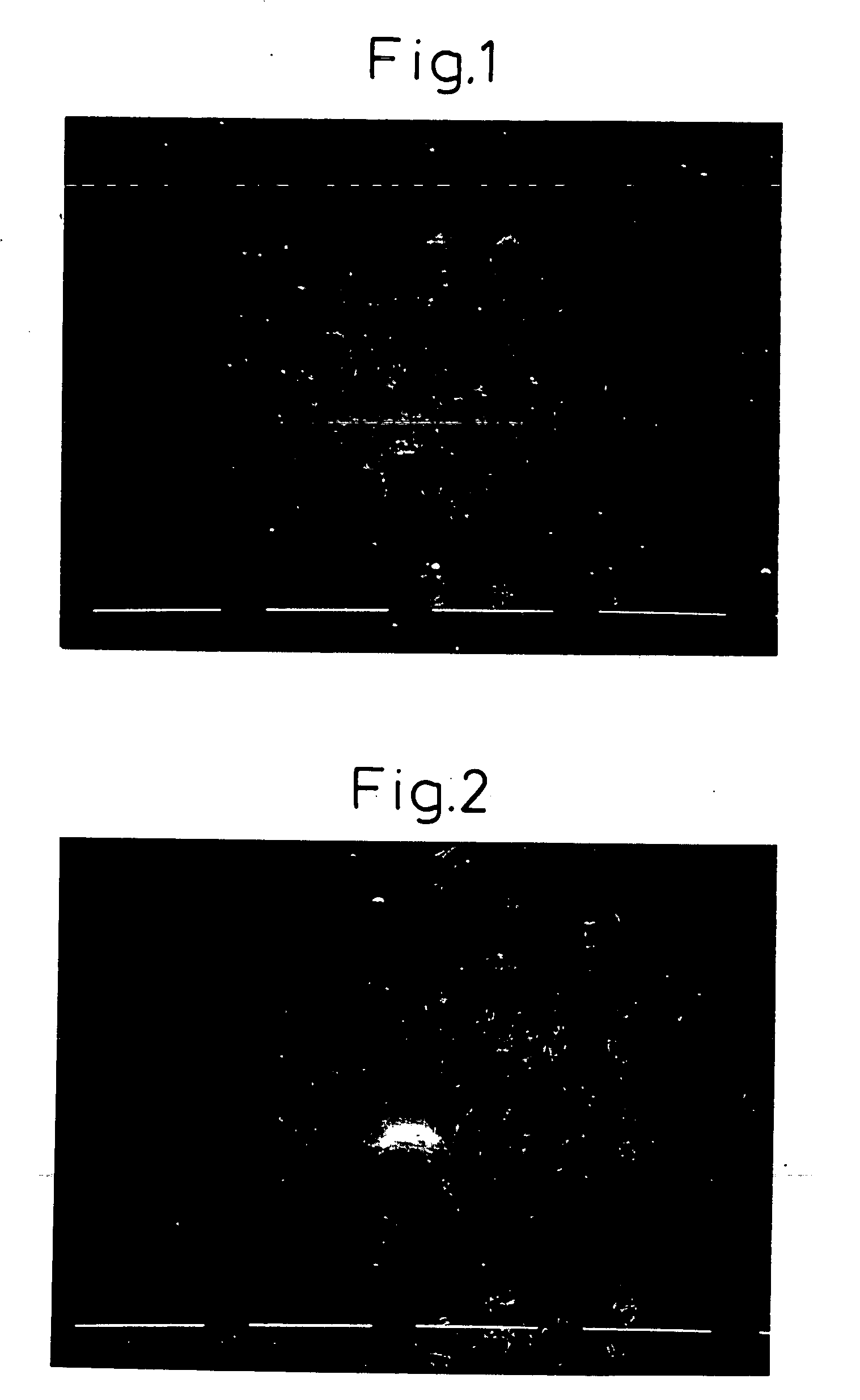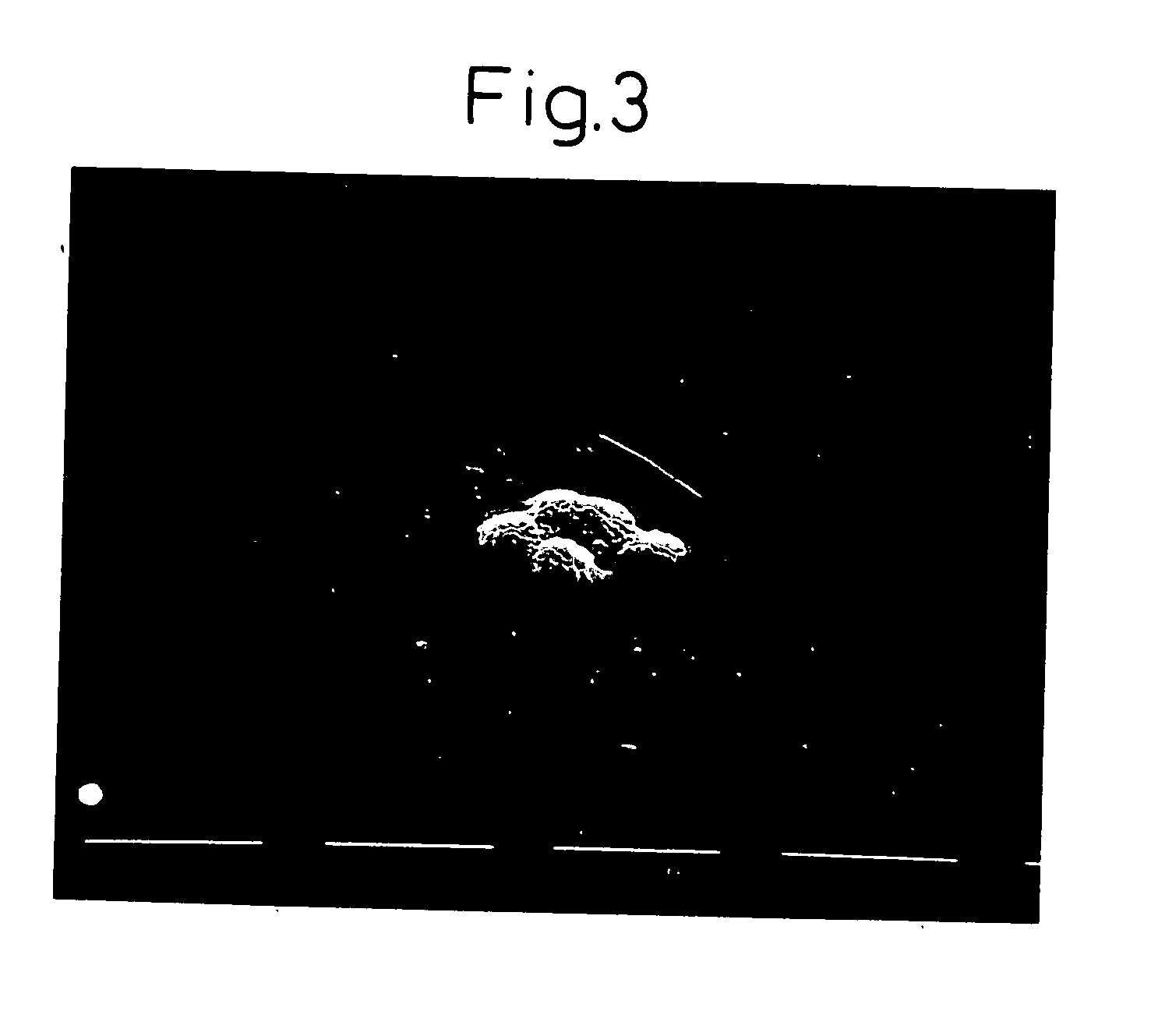Easily slidable polyimide film and substrate employing it
a polyimide film, easy-to-slid technology, applied in the field of sliding polyimide films, can solve the problems creasing or sticking to the roll, and the polyimide film has a problem of reducing the overall heat resistance of the flexible substrate, so as to facilitate winding onto the roll, improve the sliding property, and reduce the overall heat resistan
- Summary
- Abstract
- Description
- Claims
- Application Information
AI Technical Summary
Benefits of technology
Problems solved by technology
Method used
Image
Examples
reference example 1
[0061] Preparation of Particulate Polyimide
[0062] A particulate polyimide was prepared by dissolving p-phenylenediamine and pyromellitic dianhydride in N,N′-dimethylacetamide, adding a dispersant (0.5 mass % based on monomer), gradually heating to 160° C. while stirring (40 rpm) under a nitrogen atmosphere, and further stirring for 3 hours after reaching that temperature. The obtained particulate polyimide was analyzed by measuring the particle distribution with a laser diffraction / scattering particle size distribution measuring instrument, which indicated a median size of 0.3 μm and a distribution range of 0.1-1 μm. Upon confirming the particulate polyimide form by SEM observation, the particles were found to be columnar with a short / long axis ratio of 3-6.
example 1
[0063] The particulate polyimide was added to an 18 mass % polyamic acid solution composed mainly of 3,3′,4,4′-biphenyltetracarboxylic dianhydride, 2,3,3′,4′-biphenyltetracarboxylic dianhydride and 1,3-bis(4-aminophenoxy)benzene, at 0.5 mass % based on the monomer concentration, and the mixture was cast onto a stainless steel substrate to a dried film thickness of 25 μm, dried with hot air at 120° C., and peeled from the substrate to obtain a self-supporting film. The self-supporting film was slowly heated from 140° C. to 330° C. in a heating furnace to remove the solvent and accomplish imidization, and the long polyimide film was wound up onto a wind-up roll. The winding property during wind-up was satisfactory. The friction coefficient of the obtained film was also measured. The Tg of the polyimide composed mainly of 3,3′,4,4′-biphenyltetracarboxylic dianhydride, 2,3,3′,4′-biphenyltetracarboxylic dianhydride and 1,3-bis(4-aminophenoxy)benzene was 240° C.
[0064] The results of eval...
example 2
[0070] An 18 mass % polyamic acid solution composed mainly of 3,3′,4,4′-biphenyltetracarboxylic dianhydride, 2,3,3′,4′-biphenyltetracarboxylic dianhydride and 1,3-bis(4-aminophenoxy)benzene was cast onto a stainless steel substrate to a dried film thickness of 24 μm, and dried with hot air at 120° C. Onto the obtained film there was laminated a 5 mass % polyamic acid solution composed mainly of 3,3′,4,4′-biphenyltetracarboxylic dianhydride, 2,3,3′,4′-biphenyltetracarboxylic dianhydride and 1,3-bis(4-aminophenoxy)benzene, containing particulate polyimide at 2 mass % based on the monomer concentration, to a dried total film thickness of 25 μm, and this was dried with hot air at 120° C. and peeled from the substrate to obtain a self-supporting film.
[0071] The self-supporting film was slowly heated from 140° C. to 330° C. in a heating furnace to remove the solvent and accomplish imidization, and the long polyimide film was wound up onto a wind-up roll. The winding property during wind-...
PUM
| Property | Measurement | Unit |
|---|---|---|
| size | aaaaa | aaaaa |
| size | aaaaa | aaaaa |
| glass transition temperature | aaaaa | aaaaa |
Abstract
Description
Claims
Application Information
 Login to View More
Login to View More - R&D
- Intellectual Property
- Life Sciences
- Materials
- Tech Scout
- Unparalleled Data Quality
- Higher Quality Content
- 60% Fewer Hallucinations
Browse by: Latest US Patents, China's latest patents, Technical Efficacy Thesaurus, Application Domain, Technology Topic, Popular Technical Reports.
© 2025 PatSnap. All rights reserved.Legal|Privacy policy|Modern Slavery Act Transparency Statement|Sitemap|About US| Contact US: help@patsnap.com


